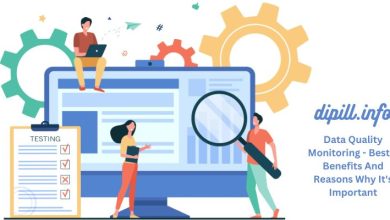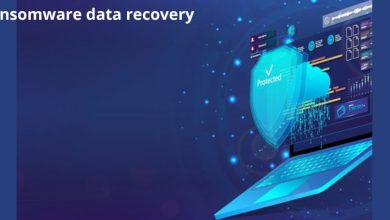In an era dominated by technological advancements and digital connectivity, the importance of data privacy and security has become more critical than ever before. With the increasing digitization of personal and professional aspects of our lives, the potential risks and vulnerabilities associated with data have grown exponentially. This article explores the multifaceted dimensions of data privacy security, delving into the challenges, solutions, and evolving landscape in our quest to safeguard sensitive information.
Contents
I. The Data Privacy Landscape:

A. Pervasiveness of Data in the Digital Age:
The 21st century has witnessed an unprecedented explosion of data generation, driven by the widespread use of smartphones, social media, e-commerce platforms, and IoT devices. This influx of data, often comprising sensitive personal information, has created a fertile ground for privacy concerns.
B. Regulatory Frameworks:
Governments and international bodies have responded to the escalating concerns regarding data privacy by enacting comprehensive regulatory frameworks. Prominent among these is the General Data Protection Regulation (GDPR) in the European Union, which empowers individuals with greater control over their personal data. Other regions, such as California with the California Consumer Privacy Act (CCPA), have followed suit, signaling a global commitment to protecting user privacy.
II. The Challenges of Data Security:
A. Cyber Threats and Attacks:
The digital landscape is rife with cyber threats ranging from phishing attacks to ransomware. Cybercriminals continually exploit vulnerabilities in systems to gain unauthorized access to sensitive information. This highlights the need for robust security measures to safeguard against data breaches.
B. Insider Threats:
While external threats are a significant concern, organizations must also contend with insider threats. Employees, intentionally or unintentionally, can pose risks to data security. Implementing stringent access controls and fostering a culture of security awareness are crucial steps in mitigating insider threats.
C. Data Interconnectedness:
The interconnected nature of data across platforms and services increases the complexity of securing information. A breach in one system can have cascading effects, potentially compromising multiple facets of an individual’s digital identity. As organizations embrace cloud computing and collaborative tools, ensuring the security of data in transit becomes paramount.
III. Protecting Data Privacy:

A. Encryption:
One of the fundamental tools in the arsenal of data security is encryption. Encrypting data at rest and in transit ensures that even if unauthorized access occurs, the data remains unreadable without the appropriate decryption keys. This is particularly crucial in safeguarding sensitive information, such as financial transactions and healthcare records.
B. Multi-Factor Authentication (MFA):
The reliance on passwords alone for authentication has proven to be insufficient in the face of evolving cyber threats. Multi-factor authentication adds an extra layer of security by requiring users to provide multiple forms of identification, such as passwords, biometrics, or one-time codes. MFA significantly enhances the resilience of authentication processes.
C. Regular Audits and Assessments:
To stay ahead of potential security vulnerabilities, organizations must conduct regular audits and assessments of their systems. This proactive approach allows for the identification and mitigation of potential weaknesses before they can be exploited by malicious actors.
IV. Emerging Technologies in Data Security:
A. Artificial Intelligence (AI) and Machine Learning (ML):
The integration of AI and ML into cybersecurity systems has proven to be a game-changer. These technologies enable predictive analysis, anomaly detection, and automated responses to potential threats. By continuously learning from patterns and evolving threats, AI and ML contribute to the proactive defense of data.
B. Blockchain Technology:
Blockchain, initially popularized by its association with cryptocurrencies, has found application in ensuring the integrity and security of data. Its decentralized and tamper-resistant nature makes it a promising solution for preventing unauthorized access and data manipulation.
V. The Future of Data Privacy and Security:
A. Privacy by Design:
As technological innovation continues, the concept of “privacy by design” has gained traction. This approach involves integrating privacy considerations into the design and development of systems, applications, and services from the outset. By embedding privacy measures at the core, organizations can foster a culture of responsible data handling.
B. International Collaboration:
Given the global nature of digital interactions, international collaboration is becoming increasingly important in addressing data privacy and security challenges. Shared frameworks, standards, and information-sharing mechanisms can contribute to a more unified front against cyber threats.
VI. Ethical Considerations in Data Privacy:

A. User Consent and Transparency:
Ethical data handling involves obtaining clear and informed consent from users regarding the collection, processing, and sharing of their data. Transparent communication about how data will be used builds trust and empowers individuals to make informed decisions about their privacy.
B. Data Minimization:
An ethical approach to data privacy emphasizes the principle of data minimization, which involves collecting only the necessary information for a specific purpose. By limiting the scope of data collection, organizations reduce the risk of unauthorized access and potential misuse of sensitive information.
C. Responsible Data Sharing:
Organizations often need to share data for legitimate purposes such as research or collaborative efforts. Ethical data sharing involves implementing measures to protect the privacy of individuals, anonymizing data when possible, and ensuring that shared information is used responsibly and in accordance with legal and ethical standards.
Conclusion:
In the age of information, data privacy and security are paramount considerations for individuals, businesses, and governments alike. The challenges posed by cyber threats necessitate a comprehensive and evolving approach to safeguarding sensitive information. As technology continues to advance, the proactive adoption of security measures, adherence to regulatory frameworks, and the integration of emerging technologies will be pivotal in shaping a secure and privacy-respecting digital landscape. By understanding the complexities and embracing innovative solutions, we can collectively navigate the path toward a safer and more resilient digital future.
Conclusion: So above is the Navigating the Landscape of Data Privacy Security in the Digital Age article. Hopefully with this article you can help you in life, always follow and read our good articles on the website: Dipill.info




